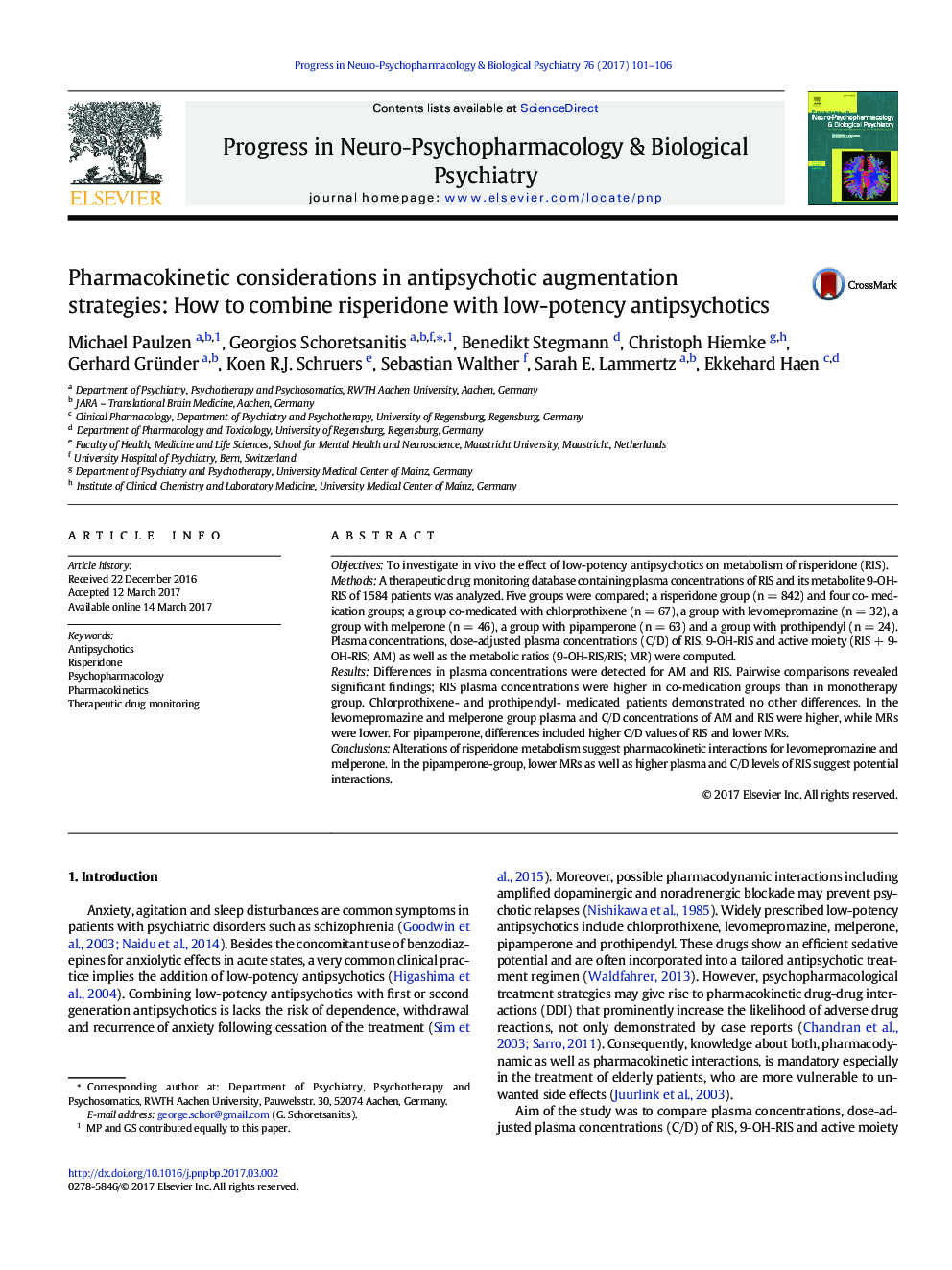| Article ID | Journal | Published Year | Pages | File Type |
|---|---|---|---|---|
| 5558094 | Progress in Neuro-Psychopharmacology and Biological Psychiatry | 2017 | 6 Pages |
â¢Combining low-potency antipsychotics with 1st or 2nd generation antipsychotics may lead to pharmacokinetic interactions.â¢Levomepromazine and melperone lead to higher blood concentrations of RIS and 9-OH-RIS by inhibiting the CYP2D6 activity.â¢Chlorprothixene, prothipendyl and pipamperone are less likely to lead to risperidone metabolism alterations.
ObjectivesTo investigate in vivo the effect of low-potency antipsychotics on metabolism of risperidone (RIS).MethodsA therapeutic drug monitoring database containing plasma concentrations of RIS and its metabolite 9-OH-RIS of 1584 patients was analyzed. Five groups were compared; a risperidone group (n = 842) and four co- medication groups; a group co-medicated with chlorprothixene (n = 67), a group with levomepromazine (n = 32), a group with melperone (n = 46), a group with pipamperone (n = 63) and a group with prothipendyl (n = 24). Plasma concentrations, dose-adjusted plasma concentrations (C/D) of RIS, 9-OH-RIS and active moiety (RIS + 9-OH-RIS; AM) as well as the metabolic ratios (9-OH-RIS/RIS; MR) were computed.ResultsDifferences in plasma concentrations were detected for AM and RIS. Pairwise comparisons revealed significant findings; RIS plasma concentrations were higher in co-medication groups than in monotherapy group. Chlorprothixene- and prothipendyl- medicated patients demonstrated no other differences. In the levomepromazine and melperone group plasma and C/D concentrations of AM and RIS were higher, while MRs were lower. For pipamperone, differences included higher C/D values of RIS and lower MRs.ConclusionsAlterations of risperidone metabolism suggest pharmacokinetic interactions for levomepromazine and melperone. In the pipamperone-group, lower MRs as well as higher plasma and C/D levels of RIS suggest potential interactions.
Graphical abstractDownload high-res image (69KB)Download full-size image
